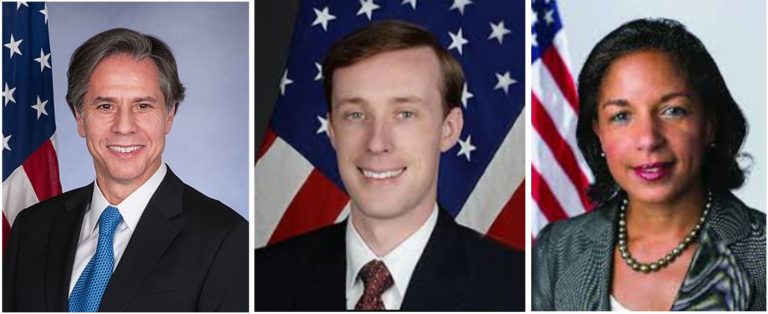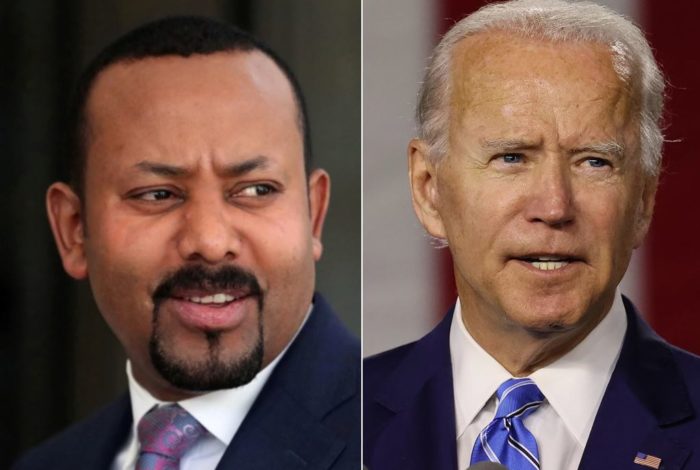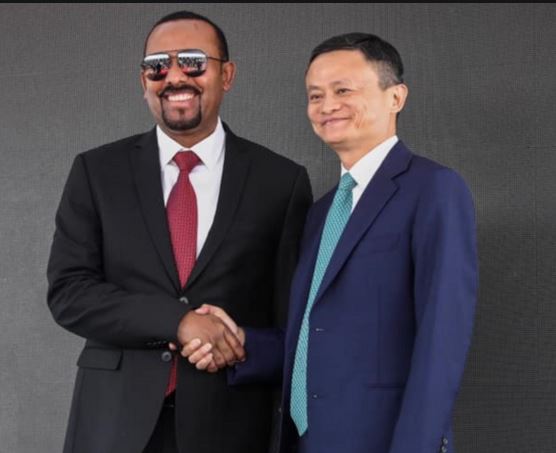Mining Corruption in Ethiopia
 The Shame of a Nation
The Shame of a Nation
In my seventh commentary on corruption in Ethiopia this year, I focus on the mining sector. For other commentaries on the subject, visit my blog site at “Al Mariam’s Commentaries”.
I continue to offer commentaries on corruption in Ethiopia to keep public attention sharply focused on the structural nature of the issue. In the past few months, the ruling regime has been grandstanding its “anti-corruption” efforts by corralling a few officials of the “Revenue and Custom’s Authority” and businessmen on charges of corruption. The kangaroo court corruption drama for those suspects is an amusing political theater staged for the entertainment of international loaners and donors who have recently intensified their pressure on the regime to show greater transparency and public accountability. For the domestic crowd, the regime’s grandstanding has been a cynical ploy to underplay, trivialize and cleverly mask the deep-rooted nature of official corruption with high profile prosecutions.
The fact of the matter is that corruption in Ethiopia is not a simple problem limited to a few rogue or crooked officials and their friends and cronies importing goods without paying customs duties. Corruption in Ethiopia is structural; it is a cancer that has metastasized throughout the whole Ethiopian body politic. It is no wonder that the World Bank (WB) titled its massive report “Diagnosing Corruption in Ethiopia”. It should have read “Diagnosing the Metastasizing Cancer of Corruption in Ethiopia”.
As I have demonstrated in my previous commentaries, structural corruption in Ethiopia manifests itself in terms of “state capture” (the chokehold powerful and wealthy individuals, groups, regime relatives, cronies and supporters, and internal and external corporate entities have in manipulating, distorting and exploiting the legislative, administrative and regulatory processes for their own advantage) and “administrative corruption” (systemic corruption in the bureaucracy and among a broad cross section of regime officials and functionaries abusing their authorities, distorting and manipulating existing laws, policies, regulations and practices for their own personal benefit).
Ethiopia today is corruptocracy (a political system operated and controlled by a small clique of corrupt-to-the-core vampiric kleptocrats who cling to power to enrich themselves at public expense). In its report, the WB documents in the usual arcane bureaucratese of international organizations that corruption in the Ethiopian mining sector is just as malignant and metastatic as in the land, education, telecommunications, construction and other sectors.
According to the WB report, the “mining sector in Ethiopia is relatively undeveloped” but the “country is rich with mineral resources.” A recent report citing official sources stated, “The Ethiopian government earned USD 419 million from the export of minerals supplied by artisanal miners operating in the country in the first 11 months of the current financial year. Export of gold made up the largest proportion of minerals, generating USD 409.1 million in foreign currency, followed by gemstones and tantalum earning USD 9.3 million and USD 1.6 million. This income came from the export of 7878.3 kg of gold, 20,126.3 kg of gemstones and 32.95 tons of tantalum…. MIDROC Gold is the only company that is engaged in large-scale gold mining.” Other reports indicate the “export of minerals has become Ethiopia’s second largest foreign currency earner, contributing over 23 percent of overall export earnings.”
The WB report identifies “seven areas of corruption risk” in the Ethiopian mining sector” including the “three main risk areas” of “license issuing, compliance with license conditions, and mining revenues”. The other critical areas of corruption include fraudulent practices in “compensations and obligations to local inhabitants, contracts with contractors and suppliers to the mining companies, falsification by mining companies of product quality, and theft of mining products and equipment.”
In the area of “license issuing”, the WB report states that “officials may extort or be offered bribes by mining companies in return for issuing licenses, for issuing licenses more quickly, or for specifying less-onerous license conditions.” A related risk is that “officials may secretly have ownership stakes in companies to which licenses are granted; acquire land for which a license application has been made; demand a share in mining companies or in their profits; and manipulate license registration to give themselves or their associates prior registration.” In “license compliance”, “mining companies may deliberately breach mining conditions (for example, environmental, health, and safety regulations, as well as the extent or area of mining)” with impunity.
In the area of mining revenue, “mining companies may deliberately understate output and profit and overstate costs to reduce royalties and profit taxes.” The regime has no independent means of verifying the revenues of mining companies. “Collection of royalties and income tax apparently depends almost entirely on the mining companies’ self-certification of output and profit because of the lack of resources at the Ethiopian federal, regional, and city licensing authority levels. It would, therefore, be relatively easy for the mining companies to exaggerate their capital and operating costs and understate their output and profit.” When “license operation and mining revenue breaches are discovered, the mining company may also bribe inspectors to overlook the breaches.”
The catalogue of corrupt practices documented in the mining sector covers the entire spectrum of corruption ranging from bribes, falsification of records, shakedowns and takedowns of mining companies and stealing compensation designated for local inhabitants to criminal use of insider information and fraudulent shell corporations:
A mining company could be required to pay a large premium in return for a mining license. Senior officials and the mining company could keep this premium secret, and the officials could receive payment in offshore bank accounts.
An official may require the mining company to make a large donation to a charity if it wants the license to be issued more quickly. Although the charity may appear to be genuine, it may in fact be a front for a political party or for the official’s personal or family gain.
A mining company may submit a health and safety plan for a mining license in accordance with good practice, but an official may tell the company that unless it pays a bribe, he or she will impose additional and unnecessarily onerous health and safety conditions.
A mining company may submit an environmental management plan for a mining license that will inadequately control the leaching of poisonous chemicals into the water supply. Proper controls would [be costly]. The mining company may pay the official responsible for approving the license a bribe to approve the deficient conditions.
Officials may demand a share in the profits of a mining company. A mining company may agree to give an official’s relative a free share in the profits of the mining project if it receives a license on beneficial terms.
Officials grant licenses to companies secretly owned by them. Officials secretly acquire land that is subject to a license application.
An official who is aware that mining may take place on an area of land may lease the land in advance of the mine licensing. Once the license is granted, the value of the land may materially increase. The official thereby profits from his or her inside knowledge by selling or licensing his or her rights to the land to the mining company.
Companies illegally on-sell licenses granted to them.
Officials manipulate license registration.
An official in the department that issues mining licenses may hear that a mining company wishes to apply for a license. The official may alert a businessperson with whom he or she has connections, and the businessperson may quickly apply for a license over the same area. The official grants the license to the businessperson. The mining company then has to purchase the license from the businessperson, and the businessperson shares the profit with the official.
A prospector may discover minerals, mark the area, and contact the relevant licensing authority to receive a discovery certificate. A corrupt official may not register the discovery in that person’s name but instead notify a business colleague and register the discovery in the colleague’s name. The corrupt official may then falsely inform the discoverer that someone else had previously discovered the minerals.
Officials collude with mining companies to grant subcontracts to relatives. The licensing authority could, as a condition of the license award or social development plan, require the mining company to undertake a large amount of additional infrastructure works at the mining company’s own cost. For example, the mining company may be obliged to build or refurbish a road, a school, or a hospital. A government official could then require the mining company to award one or more of these infrastructure projects to a contractor secretly owned by a member of the official’s family.
Officials or community leaders may steal compensation that should have gone to local inhabitants. Mining companies may bribe officials to set compensation below a proper rate.
Local inhabitants may falsely claim that they occupy land subject to a license application.
Contractors and suppliers may engage in fraudulent transactions in tendering, submitting claims, and concealing or approval of defective works.
Mining companies may commit fraud by making false declarations about the identity and quality of minerals or by bribing certifiers to approve false declarations. A major, ongoing investigation into corruption of this type is under way in Ethiopia.
The WB report attributes part of the problem in mining corruption to the regime’s incompetence in assembling, deploying and coordinating the technical manpower and expertise, management systems and regulatory policies. The regime lacks a “well-trained licensing authority staff” that has the expertise to “deal with the increasing number of license applications and the complex issues that arise in relation to license conditions.” In the area of “license operation and revenue calculation, there are too few inspectors and auditors to inspect mining operations, monitor compliance with license conditions, and ensure that mines are correctly declaring output and profit for royalties and taxes. There are no detailed guidelines in relation to the environmental, health and safety, and social conditions that should be attached to licenses. The lack of guidelines causes uncertainty during both license issuing and inspection, which can lead to corruption.”
Incredibly, the “Ministry of Mines” which controls and oversees the sector that is characterized as the “second largest foreign currency earner”, has “only 13 staff members in its general inspection unit and three environmental inspectors to handle 160 federal licenses across the country, many of them in remote areas. The Oromia regional licensing authority has only three inspectors to monitor approximately 570 active regional licenses. In contrast, the Addis Ababa city bureau is in a better position because it has seven inspectors for approximately 400 licenses.”
Anti-corruption crusade or window dressing corruption?
On paper, the regime has “laws” to detect, prevent, prosecute and punish corruption. The “Federal Ethics and Anti-corruption Commission Establishment Proclamations No. 235/2001 and No. A33/2005” and provisions in the Criminal Code impose serious sanctions on a whole range of corrupt and racketeering practices. But these “laws” are not worth the paper they are written on. They are selectively enforced and used by regime leaders often to neutralize political opponents. The late leader of the ruling regime effectively used the “anti-corruption laws” to jail rivals in his party including a former prime minster (Tamrat Layne) and a defense minister (Seeye Abraha) and other disfavored civil servants. Recent corruption arrests are a manifestation of the internecine struggle taking place within the ruling regime and less of a demonstration of a sincere and determined effort to enforce the anti-corruption laws. These arrests are also intended to send a clear message to other potential regime opponents of what they should expect if they dared to show openly their opposition.
Corruption prosecutions are a powerful cudgel in the hands of the regime, the Sword of Damocles that invisibly hangs over the head of every politician and business person in that country. The fact of the matter is that if those accused of corruption in the recent sweep at the Customs Authority are guilty, then their accusers are equally or more guilty. As I have previously observed hearkening back to an old Ethiopian saying, “There can be no beauty contest among monkeys.”
The WB report cites a 2008 Annual Performance Report by the “Federal Ethics and Anti-Corruption Commission” (FEACC) documenting the mindboggling audacity of regime officials in stealing gold worth millions of dollars in broad daylight:
The budget year also saw a huge scandal at the National Bank of Ethiopia (NBE). It was dubbed by many as ‘the huge scandal of the year.’ Here is the trick. The NBE is by law entrusted with procuring and reserving gold. Some businessmen, who were allowed to supply gold to the NBE, supplied many kilograms of gilded iron, instead of gold. Some employees of the Bank, business people, managers and other government employees were allegedly involved in this disastrous and disgracing scandal. The government lost nearly 16 million USD to this particular gold scam.
Let the official facts speak for themselves on how the regime is window dressing corruption. According to official reports, a total of 422 “federal” corruption cases were filed with 57 convictions, or a success rate of 13.5 percent! It is well known that the regime “interferes with the FEACC’s work” and “does not always act on the findings of FEACC’s reports.” The regime’s predictable response is to deny allegations of corruption and savagely criticize the critics. The fact of the matter is that the regime’s so-called anti-corruption effort is mere window dressing staged to hoodwink the international loaners and donors. The Bertelsmann Foundation 2012 Ethiopia Country Report best described the hollow nature of the regime’s “anti-corruption” crusade:
Ethiopia’s Anti-Corruption Commission was founded by and remains dependent on the government. Its efficiency is not regarded as high. Officeholders who break the law and engage in corruption are not prosecuted adequately under the law, but occasionally, in the case of allegedly disloyal civil servants, do attract adverse publicity… Officeholder corruption is not well investigated or prosecuted at any level. Some EPRDF officeholders and their family members have become wealthy as a result of corruption and illegal practices… There are a number of companies close to the government and the ruling party, which leads to a lack of transparency and corruption… Anti-corruption policy has not been very successful. A political system which eliminates all major institutional checks and balances cannot be expected to cultivate a political culture of tolerance and fairness. The mentality of the TPLF and the four EPRDF coalition member parties seems to be locked in old-fashioned war culture thinking, supported by values of neopatrimonial loyalty.
Mineshafting Ethiopians: They mine the gold, Ethiopians get the shaft
The mining sector is an easy target for corruption under the watch of a clueless regime that lacks trained staff and controls to ensure efficient and rigorous management of extractive enterprises. Having said that, one cannot ignore the fact that what appears to be sheer incompetence by the regime may be a sophisticated and calculated strategy aimed at preventing full monitoring and accountability by understaffing the oversight and monitoring systems in the mining sector. With the direct and indirect involvement of regime officials and their cronies in corruption, the detection, prosecution and punishment of corrupt officials and their partners in corruption including representatives of foreign mining interests is nearly impossible.
Fraud, extortion, graft, scams, double dealing, shakedowns and takedowns in the Ethiopian mining sector are the low hanging fruit of corruption. As the WB report shows, those regime officials involved in the mining sector are extremely adept in taking advantage of the weaknesses in the licensing, compliance and revenue verification processes and systems. The regime in general operates in total secrecy and without any accountability whatsoever, which raises serious questions of accuracy in reporting. For instance, there is no way of ascertaining for sure whether the “USD$419 million from the export of minerals earned by the Ethiopian government” is the true and accurate figure of receipts from mineral exports. It could be double or triple that amount. Is it unreasonable to suspect (or is it beyond the realm of possibility) some folks at the top got their prime cuts before the official number was released to the public? Since the regime will never tolerate an independent auditor, the only way to be sure of revenue in the mining sector is by conducting a thorough and independent forensic accounting. It is to be recalled that in 2006, the late leader of the regime dismissed the Auditor General after the Auditor General released a report showing that Birr 4.8 billion was unaccounted for in the “federal government’s” funding allocations to regional administrations. In 2009, the replacement Auditor General was again dismissed after he issued a critical report on excessive government borrowing and its impact on rising inflation.
In 2011, Global Financial Integrity (GFI) issued a report showing “Ethiopia lost $11.7 billion to outflows of ill-gotten gains between 2000 and 2009”. The report concluded, “The people of Ethiopia are being bled dry. No matter how hard they try to fight their way out of absolute destitution and poverty, they will be swimming upstream against the current of illicit capital leakage.” I addressed that issue at the time in my commentary “Ethiopia: The Art of Bleeding a Country Dry”.
Former Ethiopian president Dr. Negasso Gidada clearly understood the gravity of the corruption problem in 2001 when he declared that “corruption has riddled state enterprises to the core,” adding that the government would show “an iron fist against corruption and graft as the illicit practices had now become endemic”. In 2013, the business of corruption is the biggest business in Ethiopia and the regime is fighting corruption with kid gloves!
By ensnaring a few businessmen and officials from the “Customs and Revenues Authority”, the regime aims to grab the headlines and showboat its “anti-corruption efforts”. The regime should instead aim for “zero tolerance” of corruption. That simply means the adoption of an approach that integrates anti-corruption measures (laws, regulations and policies) with complete public transparency, rigorous criminal investigations and prosecutions and ensuring massive and overwhelming civic participation in monitoring and reporting official corruption. That is unlikely to happen any time soon in the Republic of Corruptocracy Ethiopia, Inc., As Pratibha Patil, the first woman to hold the office of President of India said, “Corruption is the enemy of development, and of good governance. It must be got rid of. Both the government and the people at large must come together to achieve this national objective.” The people of Ethiopia are willing, able and ready to tackle corruption. But they need a government to help them get the job done!
To mine corruption in Ethiopia, follow the yellow gold road to Lega Dembi.
Professor Alemayehu G. Mariam teaches political science at California State University, San Bernardino and is a practicing defense lawyer.
Previous commentaries by the author are available at:
http://open.salon.com/blog/almariam/
www.huffingtonpost.com/alemayehu-g-mariam/
Amharic translations of recent commentaries by the author may be found at:
http://www.ecadforum.com/Amharic/archives/category/al-mariam-amharic
http://ethioforum.org/?cat=24





